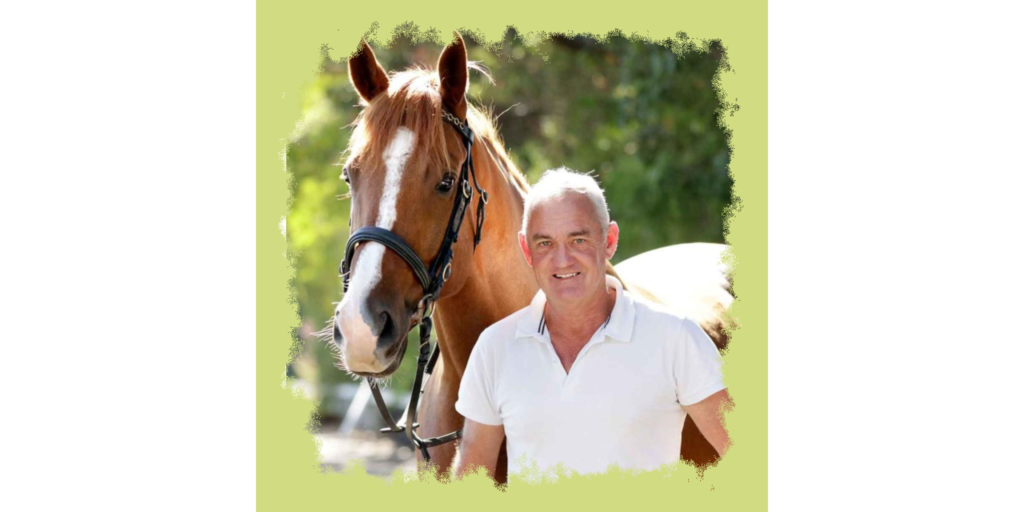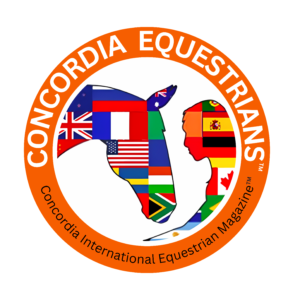THE GRAVE YAWNS FOR DRESSAGE
“Unless dressage is agile enough to move with the times and recognises its social license it is manufacturing nails for its own coffin and fast-tracking horse sports to the grave”
A CONVERSATION WITH DR ANDREW McLEAN
This article is also published in Issue 7 of the CONCORDIA INTERNATIONAL EQUESTRIAN MAGAZINE – the current issue and archived issues are free to download and read online.

Andrew McLean has long been a campaigner for equine welfare in horse riding and equine sports, and with his unequalled qualifications as both a scientist and an International competitive equestrian and trainer, he is not only a force for good but also one to be reckoned with! He talked with Milly Shand about the present state of modern dressage.
Good Hands
Andrew believes that less than 1% of riders have good enough hands and education to ride in a double bridle and that in the wrong hands, a double bridle is “a razor blade in the hands of a monkey”. The possible severity of the double bridle should not be underestimated, with two bits in the horse’s mouth – a bridoon bit and a curb bit – pressure can be applied to the bars of the mouth, the entire lower mandible, the lip, the tongue, and the poll of the horse. The curb bit is a 6:1 first-class lever and by levering the curb on one’s own shin bone, one will quickly discover that just a little pressure causes immense pain.
Self-maintenance
The concept of self-maintenance, when the horse goes on his own in speed, straightness and outline”
To test that the horse is in self-carriage the rider goes from having a light contact to smoothly pushing the hands forward for a few seconds – then taking the hands gently back to a light contact. If the horse is in self-carriage then he will maintain his outline.
The photo below shows the rider testing for self-carriage while the horse is moving.

Terms
The terms used in dressage and general horse training have become blurred compared with their original meaning. For example, the true and original meaning of self-carriage can be simply explained – if you let go of the reins for a couple of strides and the horse runs off or falls onto his forehand, then he is not in self-carriage. If you let go of one rein and the horse drifts sideways or becomes crooked, he’s not in self-carriage. If you take your legs away from the horse for two strides, and he slows down, he’s not in self-carriage. Self-carriage is supposed to be a cornerstone of correct dressage training but we increasingly see horses, even and maybe especially, at the highest levels that are held together between the rider’s legs and hands when true self-carriage is the horse’s self-maintenance of his posture, tempo, stride length, line and straightness. The concept of self-maintenance, when the horse goes on his own in speed, straightness and outline, is explained by Andrew in his investigation of Objective Dressage Judging.
“I think this ‘self-maintenance’ definition should be paramount in determining rhythm where the judge can see that the horse is not held in its speed by the rider but is trained to remain in gait, tempo and stride length/height. The notion that the horse should ‘continue to keep going’, means that if the horse is seen to be held by the reins or rider’s leg in speed, straightness or outline, then it isn’t going ‘on its own’ – it isn’t in self-carriage and it’s bad for the horse’s mental well-being. Judges need to be able to imagine if the horse in front of them can ‘go on its own’ in the way it is ridden and marks should cascade accordingly, if not”.
Tradition
The double bridle and spurs have been synonymous with advanced dressage competitions and understandably people are loathed to lose their traditions. Keeping traditions alive is part of human nature, yet when things do change, we quickly get used to something new. Both Andrew and Milly remembered how they felt about top hats being superseded by crash hats, although for Andrew that eased when a person outside the horse sports asked him why he dressed like an undertaker!
Education
Andrew strongly believes that there should be basic mandatory education for all competition riders and trainers, which should include welfare, learning theory and anatomy, all of which he feels is lacking. Visual perception is simply that, and whatever we see routinely can become normalised. Most horses are now ridden too short in the neck and behind the vertical – something that is now generally accepted with no apparent appreciation of the possible physical and emotional harm to the horse.
Changes in FEI Rules & Regulation
The FEI’s answer to criticism of them moving away from the directives of dressage is to change their rules, and there are also rumours of a change of name away from dressage!
Andrew suggested that the renaming of dressage to be ‘sport riding’ would be comparable to the renaming the Titanic – dressage is sailing itself into an iceberg!
This article is also published in Issue 7 of the CONCORDIA INTERNATIONAL EQUESTRIAN MAGAZINE – the current issue and archived issues are free to download and read online.
